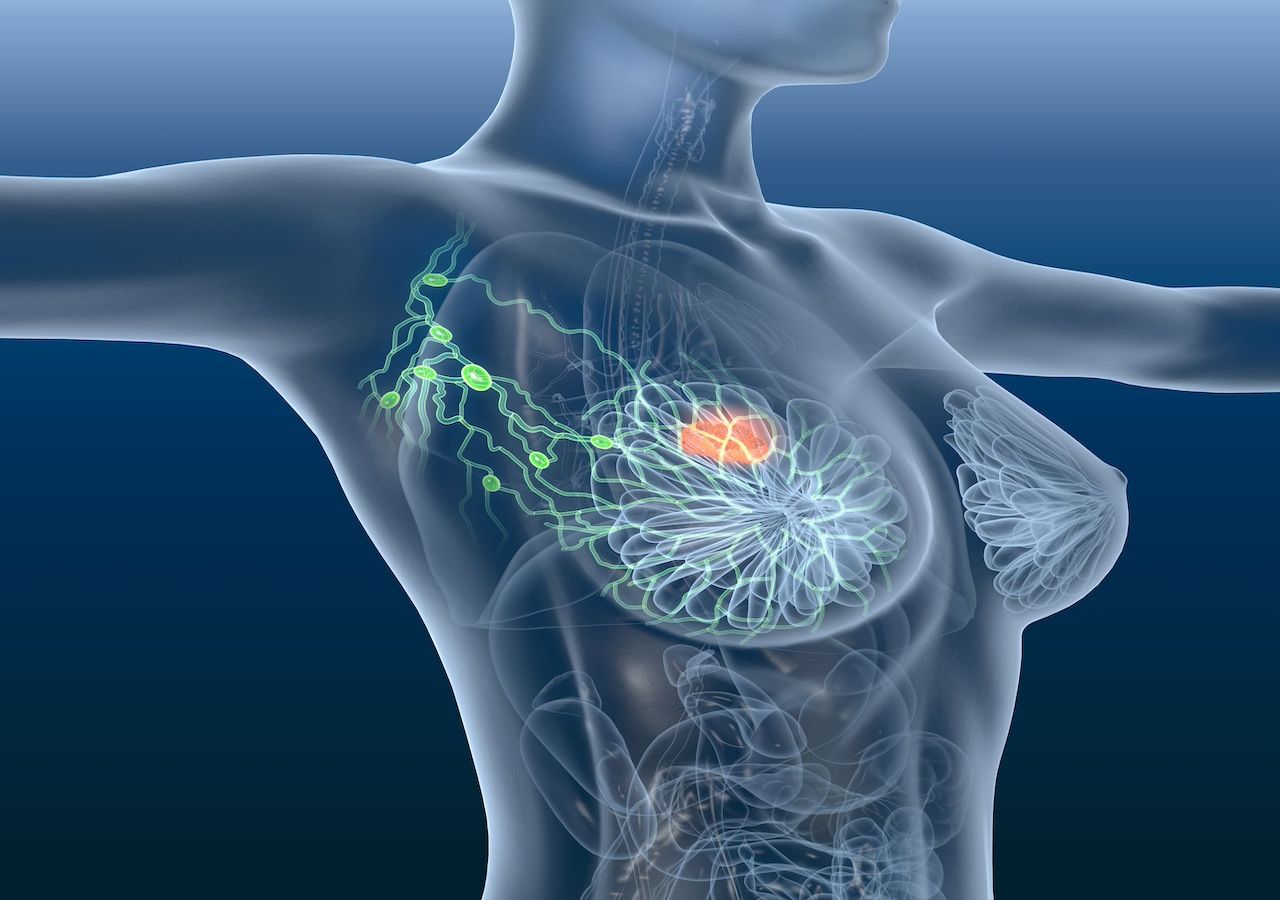- Center on Health Equity and Access
- Clinical
- Health Care Cost
- Health Care Delivery
- Insurance
- Policy
- Technology
- Value-Based Care
Breast Cancer Incidence Highest Among Young Black Women in the US
Researchers have identified a surge in breast cancer rates among young women and racial disparities across age groups.
Young women living in the US have an increased incidence of breast cancer and age-related crossover between non-Hispanic White and Black women.
Breast cancer | Image credit: Axel Kock - stock.adobe.com

These findings suggest a need for a targeted approach to address prevention efforts in young women and racial disparities in breast cancer incidence at different age phases.
This population-based, cross-sectional study is published in JAMA Network Open.
“Our findings suggest that breast cancer risk assessment should start at an early age in non-Hispanic Black women to determine whether targeted screening should be recommended earlier in non-Hispanic Black women at high risk,” wrote the researchers of the study.
Young women with breast cancer have a less favorable prognosis compared with older women. However, data on recent trends and period and cohort effects among young women are not well known.
In this study, the researchers aimed to determine breast cancer incidence among young women over a 20-year period by race and ethnicity, hormone receptor (HR) status, tumor stage, and age at diagnosis, as well as how period and cohort effects may affect these trends. Data were analyzed from the Surveillance, Epidemiology, and End Results (SEER) 17 registries from 2000 to 2019 for the primary analysis.
The researchers included age-standardized incidence rates (ASIRs), incidence rate ratios (IRRs), and average annual percentage changes (AAPC) stratified by race and ethnicity, HR status, tumor stage, and age at diagnosis.
Women aged 20 to 49 years who had a diagnosis of primary invasive breast cancer were included in the analysis. A total of 302,216 potentially eligible female participants were identified, and 217,815 were included in the final analysis.
Of these women, 1485 (0.7%) were American Indian or Alaska Native; 25,210 (11.6%) were Asian or Pacific Islander; 27,112 (12.4%) were non-Hispanic Black; 37,048 (17%) were Hispanic; and 126,960 (58.3%) were non-Hispanic White.
Additionally, 134,024 (61.5%) of these individuals had an estrogen receptor– and/or progesterone receptor–positive (ER+/PR+) tumor, and 81,793 (37.6%) had a stage I tumor. A small proportion of individuals had missing information on HR status (18,077 [8.3%]) and tumor stage (12,832 [5.9%]).
Overall, invasive breast cancer incidence increased (AAPC, 0.79; 95% CI, 0.42-1.15), with increasing trends across almost all racial and ethnic groups. Additionally, ASIR increased for ER+/PR+ (AAPC, 2.72; 95% CI, 2.34-3.12) and ER+/PR-negative (PR–) tumors (AAPC, 1.43; 95% CI, 1.00-1.87), and decreased for ER-negative (ER–)/PR+ (AAPC, –3.25; 95% CI, –4.42 to –2.07) and ER–/PR– tumors (AAPC, –0.55; 95% CI, –1.68 to 0.60).
Non-Hispanic Black women had the highest ASIRS for women aged 20 to 29 years (IRR, 1.53; 95% CI, 1.43-1.65) and 30 to 39 years (IRR, 1.15; 95% CI, 1.12-1.18). However, ASIR was lower for non-Hispanic Black women aged 40 to 49 years (IRR, 0.96; 95% CI, 0.94-0.97) compared with non-Hispanic White women. Furthermore, incidence rates increased for stage I and IV tumors but decreased for stage II and III tumors, while age-period cohort analysis demonstrated both cohort and period effects on breast cancer incidence (P < .001).
The researchers acknowledged some limitations to the study, including missing data for unknown ER or PR status, not being able to evaluate more intricate subtypes over a 20-year period, and SEER data not providing information on risk factor data.
Despite these limitations, the researchers believe the study captures an increase in breast cancer incidence rates in the US among women aged 20 to 49 years, which they mainly attributed to increases in the incidence of ER+ tumors. Moreover, these findings observed an elevated incidence rate among young non-Hispanic Black women.
“Our findings underscore the need for further research into specific breast cancer risk factors among younger women and possible targeted breast cancer prevention strategies for at-risk groups,” wrote the researchers.
Reference
Xu S, Murtagh S, Han Y, et al. Breast cancer incidence among US women aged 20 to 49 years by race, stage, and hormone receptor status. JAMA Netw Open. 2024;7(1):e2353331. doi:10.1001/jamanetworkopen.2023.53331
Mental Health Diagnoses, Care Challenges Rise Among US Youth, Report Finds
April 26th 2024While behavioral health care utilization has been rising, the treatment landscape has been worsening. New findings show that 20% of youths did not receive any form of treatment within 3 months of their initial behavioral health diagnosis.
Read More
Examining Low-Value Cancer Care Trends Amidst the COVID-19 Pandemic
April 25th 2024On this episode of Managed Care Cast, we're talking with the authors of a study published in the April 2024 issue of The American Journal of Managed Care® about their findings on the rates of low-value cancer care services throughout the COVID-19 pandemic.
Listen
Insurance Coverage Limits JAKi Therapy Access for Patients With AA, Especially Non-White Populations
April 25th 2024A survey study showed major barriers to Janus kinase inhibitor (JAKi) therapy for patients with alopecia areata, especially for non-White patients who face higher rates of being uninsured and struggle more to afford the treatment.
Read More
Empowering Community Health Through Wellness and Faith
April 23rd 2024To help celebrate and recognize National Minority Health Month, we are bringing you a special month-long podcast series with our Strategic Alliance Partner, UPMC Health Plan. In the third episode, Camille Clarke-Smith, EdD, MS, CHES, CPT, discusses approaching community health holistically through spiritual and community engagement.
Listen
